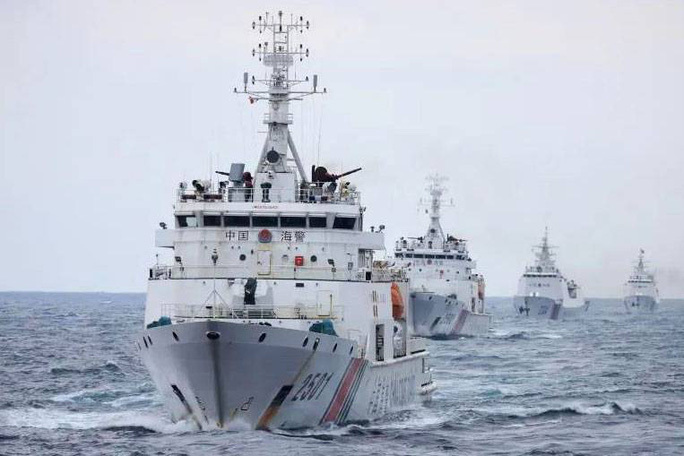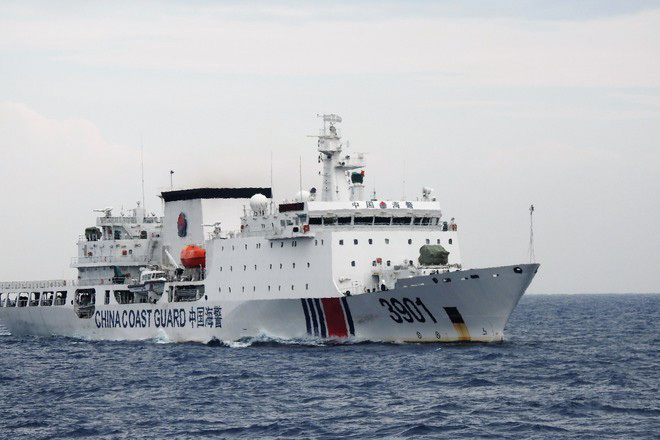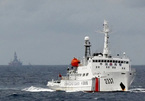According to the Chinese media, the Standing Committee of the National People's Congress, the highest legislative body in China, passed the Coast Guard Law on January 22. The law came into effect on February 1, 2021.
Accordingly, the Chinese Coast Guard is allowed to use "all necessary means" to block or avoid threats from foreign ships. The law specifies the conditions under which weapons, such as firearms, ship-mounted weapons, or aircraft weapons, can be used.
 |
|
China's Coast Guard Law makes a lot of concern for the world |
China’s Coast Guard Law took effect only two days after Mr. Biden took office as US President. Beijing's announcement of the Coast Guard Law at this time demonstrates the following issues:
First, China wants to take advantage of the opportunity. When Mr. Trump was still the US President, China would not be foolish to "anger" Mr. Trump, who always made very sudden and unpredictable decisions.
For President Biden, he is focusing on domestic issues such as the Covid-19 pandemic, the economic crisis and post-Trump political problems. This is an opportunity for China to take advantage of without fear of response from the US-China's biggest rival.
Second, this can also be seen as a "deterrence" to countries that have maritime disputes with China. China is at a sea dispute with Japan in the East China Sea and with many Southeast Asian countries in the East Sea (internationally known as the South China Sea).
Third, this is also an action to "probe" the new US government to see its interest and involvement in the East Sea.
Threats from China’s Coast Guard
China's Coast Guard Law creates a lot of concern for the world. Article 19 of this law empowers the Chinese maritime forces to use weapons when national sovereignty, sovereignty and jurisdiction are infringed by foreign organizations or individuals at sea or facing the danger of being violated illegally.
The problem is that China always makes illegal claims at large seas, including the East Sea and East China Sea.
The Chinese Coast Guard Law also allows the coast guard forces to put artificial islands illegally built by China in the East Sea (including 7 island features in the Truong Sa Archipelago (Spratly Islands) and some features in the Hoang Sa Archipelago (Paracel Islands) within its range of protection, allowing them to participate in law enforcement on all exclusive economic zones, continental shelf and even in the air.
The law even allows Chinese Coast Guard to remove foreign-built structures in waters they claim to be under "control" of this force. In addition, this force is allowed to confiscated and destroyed foreign ships if they "illegally violate the waters" of China.
The Chinese Coast Guard force has repeatedly chased away other foreign fishing vessels, sometimes leading to collisions and sinking of foreign ships. With the new law passed, it is worried that China is making the East Sea an outbreak of clashes.
China for many years has been claiming sovereignty and increasingly fierce in establishing sovereignty over most area of the East Sea.
Flaunting power
During the past time, many waters in the region have been stirred by the activities of fleets from China. In the East China Sea, Chinese ships are exploring the waters around Senkaku/Diaoyu Islands, which is controlled by Japan. In the East Sea, China turns the island features it illegally seized in Truong Sa and Hoang Sa (of Vietnam's sovereignty) into solid military bases.
The United States and its allies have sent increasingly large warships to the waters to challenge Chinese claims. The Chinese navy, the world's largest navy, is also more active than ever. However, the country's Coast Guard forces plays an increasingly important role in maritime disputes.
 |
|
The newest ship, CCG 3901 (short for China Coast Guard), entered service in 2017.
|
In 2013, China merged several civil maritime law enforcement agencies with a new agency, called the Coast Guard Department. Five years later, this force is under the control of the People's Armed Police, a paramilitary force that reports to the Central Military Commission - China's supreme military agency.
In fact, this has turned the Coast Guard into a branch of the Chinese armed forces.
Currently, the Chinese Coast Guard has more than 500 ships, ranking the first in potential in the region. Japan ranks second, with 373 ships. The Philippines has 86 ships and Indonesia has 41 ships.
The Chinese ships are also stronger. One decade ago, China had only 10 ships, with displacement of at least 1,500 tons (equivalent to the size of a small warship). But by 2015, China had 51 such ships. The International Institute for Strategic Studies (a London-based consulting organization) said that China currently has 87 ships.
Many Chinese coast guard vessels are bigger than the largest warships of the navies in the region. For example, the Zhao Tou class vessel of the Chinese Coast Guard weighs 12,000 tons. The deck is large, accommodating two helicopters, one cannon 76mm and one arsenal.
China has two such ships. One ship is deployed on the east coast. The newest ship, CCG 3901 (short for "China Coast Guard"), entered service in 2017 during its first patrol in the East Sea, which is the area where it operates. The appearance of this giant ship has one purpose: China supports its sovereignty claims in the above area with such a "steel block".
China uses the Coast Guard not only to enforce conventional maritime laws but also to show strength. In 2019, when China sent the Haiyang Dizhi 8 survey ship to the exclusive economic zone (EEZ) of Vietnam, they dispatched a fleet of Coast Guard ships to escort it, including the CCG 3901.
In April 2020, when the Haiyang Dizhi 8 arrived in Malaysia's EEZ, the CCG 3901 was sent along.
A report released in 2019 by the Washington-based Center for Strategic and International Studies said that 14 Chinese maritime vessels patrolling disputed island features in the East Sea broadcast their position on the automatic identification system, an international ship tracking network, to demonstrate "a clear, frequent presence of China".
The presence of Chinese Coast Guard in the East Sea is thanks to the supplies it receives from newly built outposts of China in the region.
Chinese Coast Guard ships also regularly patrol the vicinity of islands in the East China Sea and frequently enter the 12-nautical mile territorial waters around the Senkaku Islands.
Meanwhile, the Chinese Air Force is also present in the Senkaku Islands and the southern islands of Japan.
Viet Hoang

China’s Coast Guard bill: ‘a test’ for the new US President
While the world focused on the US presidential election, tensions in the East Sea have not been relieved as provocative actions from Beijing continued.